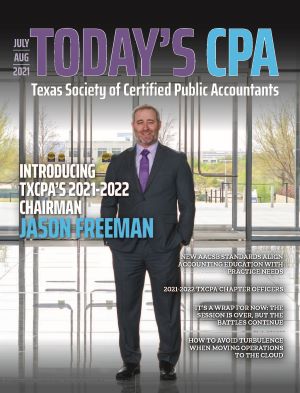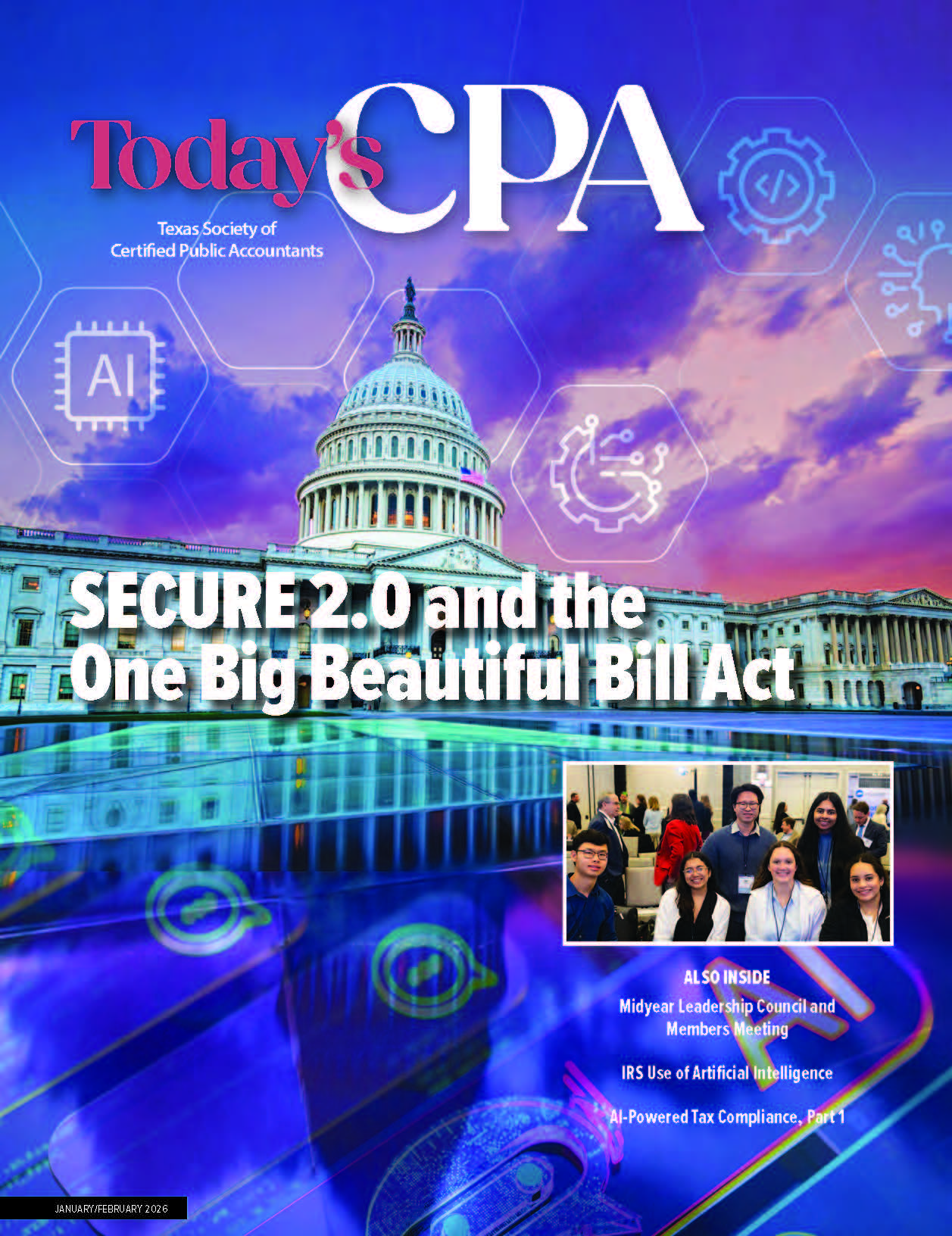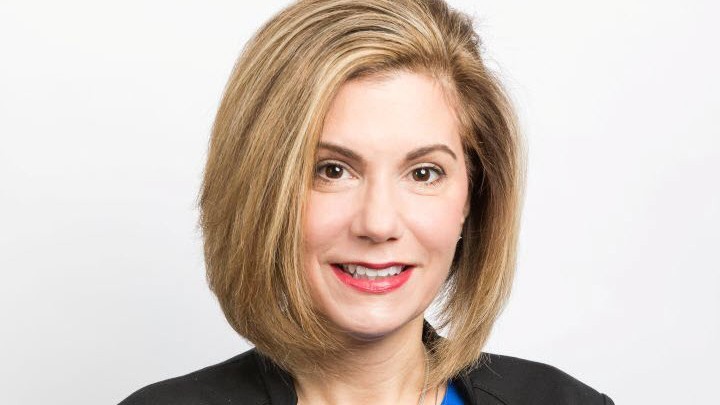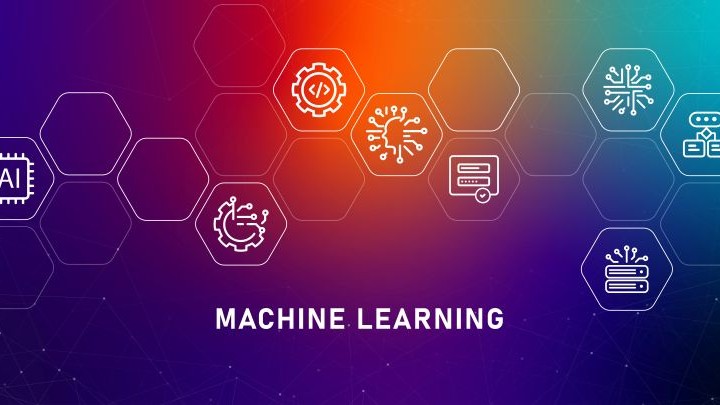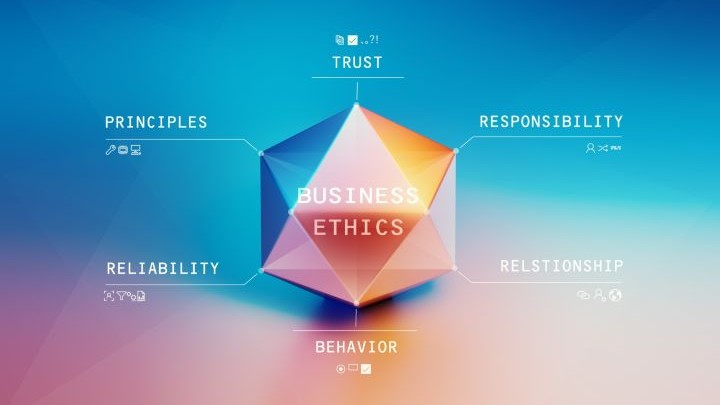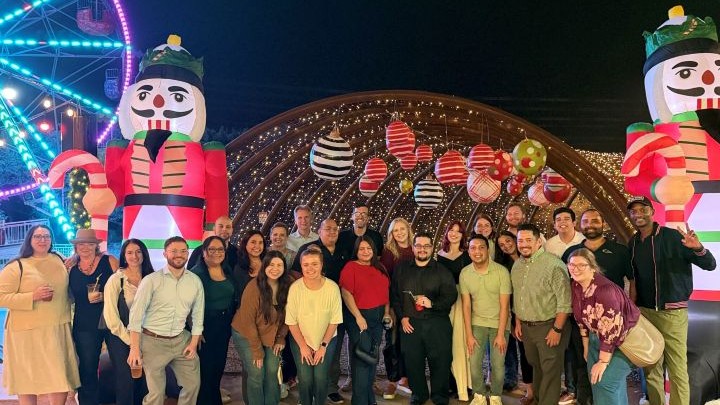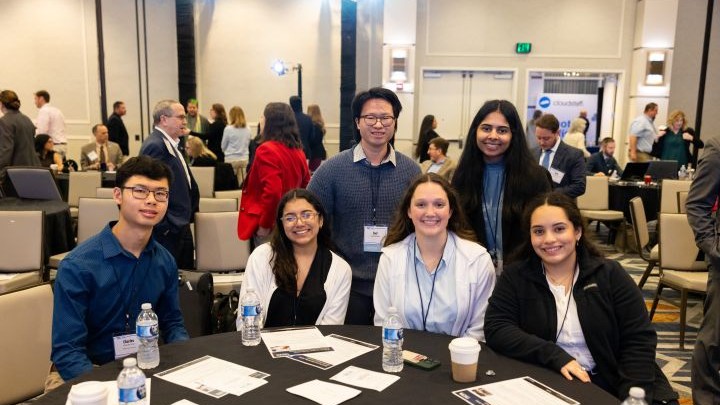July 01, 2021
The Light at the End of the Tunnel
New AACSB Standards Align Accounting Education with Practice Needs
Many accounting practitioners have been critical of accounting graduates entering the workplace and claim they do not have all the skills and awareness the profession requires. According to practitioners, accounting education has not kept pace with the needs of the rapidly changing and expanding accounting profession, has not adapted to technology changes, and has not adjusted to the complex business environment and globalization. As such, accounting programs urgently need an overhaul.
Pursuant to this belief, over the past several decades, the accounting profession has undertaken different initiatives, such as studies, recommendations and grants, to encourage the needed change in accounting education, but that has not ended the continued concerns of the accounting practitioners.
However, the 2013 and 2020 accreditation standards adopted by the Association to Advance Collegiate Schools of Business (AACSB) International, the leading and most prestigious accrediting body for business schools, have shown promise for having potentially more effective accounting education that may at last meet the accounting practitioners’ needs.
Through its new accreditation standards and expectations, the AACSB has begun to make business education much more connected to practice in order to enhance the value, relevancy and impact of business education. The main difference between the accounting profession initiatives and the AACSB initiatives to enhance accounting education is that the AACSB actually has enforcement power.
Accounting practitioners could foster the needed change in accounting education through means available to them. This article discusses the profession’s concerns and major initiatives over the past decades, the AACSB’s new accreditation standards that have offered cautious optimism for potentially effective changes in the accounting programs to meet practitioners’ needs, and the means that accounting practitioners can use to help the AACSB’s new standards succeed.
Accounting Profession’s Initiatives
Over the past several decades, the accounting profession undertook major noteworthy efforts to encourage reform in accounting education. Five of them include the Bedford Report, 150-hour education requirement for the CPA, the “Big 8 White Paper,” “Accounting Education: Charting the Course Through a Perilous Future,” and the Pathways Commission on Accounting Higher Education.”
Bedford Report
In 1984, the American Accounting Association (AAA) appointed the Bedford Committee to investigate the future structure, content and scope of accounting education, and recommend goals and strategies for change to accounting education within universities and colleges by the year 2000. In 1986, the Bedford Committee report concluded that accounting programs were not preparing students adequately for professional accounting careers in public accounting, industry and government as “accounting graduates do not know how to communicate, do not reason logically, are deficient in interpersonal skills, and cannot think creatively and responsibly.”
The report concluded that change in accounting education was necessary due to the “massive changes taking place in technology and social values,” as well as the need for accountants to have a broader educational base because the scope of accounting services had expanded well beyond auditing.2
150-Hour Education Requirement for CPA
In 1988, 83% of the approximately 200,000 AICPA members voted that new members joining after the year 2000 complete 150 semester hours to obtain the required body of knowledge and to develop the necessary skills and abilities to be successful CPAs.3 According to the AICPA website, all states and U.S. jurisdictions, except the U.S. Virgin Islands, require at least 150 semester hours of college education for CPA licensure.
There is little uniformity, however, in the education requirements to sit for the CPA Exam across the states and jurisdictions. There is disparity in the required degree, the number of required credit hours of accounting courses, the number of required credit hours of business courses and timing to sit for the Exam.
Big 8 White Paper and Accounting Education Change Commission
In 1989, CEOs of the eight largest public accounting firms (Arthur Andersen & Co., Ernst & Whinney, Arthur Young, Peat Marwick Main & Co., Coopers & Lybrand, Price Waterhouse, Deloitte Haskins & Sells, and Touch Ross) issued “Perspectives on Education for Success in the Accounting Profession.” Known as the “Big 8 White Paper,” it stated the CEOs’ position on requisite education for the accounting profession.4
The paper called for major professional and academic groups to launch a coordinated approach to change and shape the direction of accounting education. Along with requisite knowledge for public accounting, the report specifically noted accounting educators must focus on capabilities the accounting profession needs, including:
- Communication;
- Critical thinking;
- Problem solving; and
- Interpersonal skills.
The accounting profession felt so strongly about the need for change that they pledged $4 million, which was then increased to $6 million to help create the Accounting Education Change Commission (AECC).5 The AECC’s mission was to spark a plan to improve the academic preparation of accounting students, so that entrants to the accounting profession possess the requisite skill, knowledge and attitudes to succeed in an accounting career.
To find ways to achieve the AECC mission, the Commission gave 13 colleges and universities AECC grants.6 When the AECC’s funds ran out, the accounting education change movement also perished.
Accounting Education: Charting the Course Through a Perilous Future
In 2000, a study sponsored by the AAA, AICPA, Institute of Management Accountants (IMA) and Big Five CPA firms entitled “Accounting Education: Charting the Course Through a Perilous Future,” reported that practitioners believed the current accounting education structure was outdated, broken and in need of significant changes.7
The report detailed the present-day ills of accounting education by referencing both practitioners and academics. It stated that despite the profession’s continued concerns, schools continue to deliver accounting education in the same way it has been for the past 20 to 30 years, despite the dramatic changes in accounting practice to meet new market-based demands brought on by changes in technology, business to business (B2B), e-commerce, global competition and interaction, and “web-speed” decision making. The report stated that the accounting programs have not addressed the deficiencies practitioners noted in earlier reports and studies, and it warned of possible destruction of accounting education if current practices continue.
Pathways Commission on Accounting Higher Education
In 2010, the AAA and AICPA established the Pathways Commission on Accounting Higher Education to enhance the relevance of accounting education.8 The Pathways Commission has issued several recommendations to improve accounting education. Examples include:
- Integrate professionally oriented faculty into significant aspects of accounting education, programs and research;
- Emphasize signature pedagogies in curriculum, such as internship and volunteer income tax assistance, that teach students how to think and act professionally in real-life career environments (pedagogies that mirror practice);
- Focusing on academic research that has impact and relevance to practice issues; and
- Enhancing the outcome and value of exchanges and collaborations between practitioners and educators.
The same as the Pathways Commission, several prior studies had pointed out the necessity of greater collaboration between practitioners and academicians, so accounting graduates can meet the profession’s increasing expectations. At a minimum, interacting with accounting practitioners will assist academicians to understand the needs of the complex and ever-changing profession and gain insights regarding legitimate professional concerns.9 Furthermore, such interaction will allow practitioners the opportunity to influence accounting programs’ content and structure, thereby developing graduates who will be better prepared for prospective employment.10
After the 2002 accounting scandals that led to Enron’s collapse, PricewaterhouseCoopers in its 2003 position paper on education wrote that new entrants to the accounting profession do not understand what it means to be a member of the profession and suggested frequent interaction of accounting students with accounting professionals through meetings and internships.11 One study examined accounting educators and accounting practitioners collaborating and concluded that significant change occurs when the stakeholders work together.12
AACSB’S New Accreditation Standards
The accounting profession’s initiatives have only produced different sets of recommendations and suggestions to enhance accounting education to meet real-world needs. Except for the 150 semester hours of higher education for the CPA, there has been no reinforcement for the adoption of the profession’s recommendations by academia. As a result, accounting programs have not entirely incorporated the needed changes to end the profession’s continued concerns.
Through its new accreditation standards and expectations, the AACSB has begun to make business education much more connected to practice in order to enhance the value, relevancy and impact of business education. The AACSB’s new standards were adopted after several years of study and discussions with business leaders and academic community members globally.
The new accreditation standards, which apply to more than 870 schools in 56 countries and territories, emphasize collaboration between business educators and practitioners to bridge the gap between classroom education and practice. Adopted in 2013 and updated in 2020, the highlights of the AACSB’s new standards include a change to faculty qualifications and an emphasis on engaging with practitioners.
Change in Required Faculty Qualifications
The AACSB’s most significant change in standards broadens the faculty qualification categories. For decades, the AACSB’s accreditation standards encouraged business schools to invest in Ph.D. faculty and research, but the AACSB’s new standards have enabled business schools to hire and retain a larger number of practice-oriented faculty members than ever before. Under the new accreditation standards, three of four categories for faculty qualifications are practice-oriented: scholarly academics, practice academics, scholarly practitioners, and instructional practitioners.13 Engagement activities involve substantive connections to practice, real-world work experience, consulting and other forms of professional engagement.
Under the new AACSB standards, up to 60% of faculty members can be individuals who are practice-oriented and continue to cultivate relationships with the business community and engage in activities that involve substantive links to practice, consulting, faculty internship and other forms of professional engagement. These faculty members bring a perspective on practical issues that accountants face daily. This provides students with the opportunity for a practical education, critical skills development, and a better understanding of career opportunities and the profession’s skill requirements.
Emphasis on Engagement and Interaction with Business Practitioners
The other significant change is an increased level of emphasis on engagement and interaction of faculty and students with business practitioners.14 The AACSB encourages business schools to have a range of engagements with external stakeholders through their core activities. The AACSB believes that a quality business education can only be achieved when educators, students and practitioners interconnect in meaningful ways.
The AACSB believes that the defining feature of quality business schools includes engaging with external stakeholders. Under the new standards, the AACSB expects a business program to outline and report the major relationships the school, units within the school, faculty and students have in place with external stakeholders. The business program must report the rationale for the relationships, the intended outcomes and an assessment of how effective the school has been.
The Role of Practitioners
While primary responsibility to enhance the value, relevancy and impact of accounting education rests with accounting educators, practitioners’ cooperation and support are paramount and essential for accounting programs to succeed. The AACSB’s new standards have created opportunities for greater collaboration. To capitalize on these opportunities, more practitioners and academics should commit to a personal, ongoing involvement aimed at achieving productive changes in accounting education.
Some ways practitioners can help prepare accounting graduates for the real world include student internships, VITA programs, guest speakers, field trips, research projects and faculty internships.
Provide Internship Opportunities
Through internships, practitioners provide opportunities that immensely help students prepare for the practice. An internship is an excellent avenue for students to learn firsthand what the real-world accounting environment is like and gain valuable experience for an entry-level position through hands-on experience.
Many students master skills better this way, and simply learn better with a hands-on approach versus textbooks or in the classroom. An internship provides students with an opportunity to learn the following:
- Interpersonal and technical skills for practice;
- The way practicing CPAs listen to clients, then think about the issue, then write about the issue, propose a solution for the issue, receive feedback about the issue and then, finally, solve the issue;
- The amount and nature of the work expected of employees in practice;
- The level at which they are expected to perform at work upon graduation;
- Skills to manage time and organize tasks;
- How to promote ethical insights; and
- Establish a network with professionals and potential references.
In addition, there is always a possibility that a student could be hired as a full-time employee at the end of the internship. Faculty members supervising the academic internships also get an opportunity to keep abreast of issues in accounting practice. The Pathways Commission has recognized the internship as a signature pedagogy – a pedagogy that mirrors practice and teaches students how to think and act professionally in real-life career environments.
Engage Students in the VITA Program
Recognized as a signature pedagogy by the Pathways Commission, the Volunteer Income Tax Assistance (VITA) Program is an IRS-sponsored program that offers free tax return preparation and general tax help to families and individuals with low incomes. Practitioners, in particular retired practitioners, could team up with accounting educators to offer the VITA program. Students who participate in the VITA program develop interpersonal, problem-solving and hands-on technical skills along with teamwork and office management skills that better equip them for career opportunities.
Serve as Guest Speakers
By making themselves available as guest speakers, practitioners can benefit students enormously by sharing their experiences, ongoing contemporary issues in practice, technological advances in the real world, and new perspectives on other important subjects that are often not covered in class.
Practitioners could make students aware of the complex business environment that requires professionals to be able to review problems facing their clients, synthesize the many points of information, and concisely distill them into a coherent explanation and course of action.
Provide Field Trips
Another fast avenue that practitioners can provide students with professional awareness, experiences and a better understanding of the real world is a field trip. Field trips help students to see what is happening in the “real-world.” A University of Arkansas study found that students who participate in a field trip show increased empathy, tolerance and critical thinking skills.15
Partner on Research Projects
Practitioners and accounting educators could team up to undertake research projects that benefit the practice. Such joint research projects will enhance accounting educators’ awareness of the nature and complexity of ongoing issues in practice along with practice needs. Partnerships between practitioners and educators could foster more relevant and applied research for practice.
Faculty Internship
Providing internships to interested accounting faculty members is another means that could produce a win-win situation. Through the experience, faculty members can keep current with the industry and stay connected with the real world they try to teach their students about each day.
The firm or company that provides the faculty internship also benefits by:
- Tapping into a professor’s expertise in a certain subject area to help with a particular need;
- Building a relationship with the area university and influence the curriculum of future entry-level accountants;
- Enjoying easy and frequent access to the best and brightest students; and
- Broadening the firm’s or company’s reputation when faculty share experiences gained through the faculty internship.
Obstacles
Although the AACSB’s efforts are expected to enhance the value, relevancy and impact of accounting education, the AACSB, accounting programs and accounting practitioners need to address obstacles to ensure the intended outcome of the new standards. They are as follows.
1. The AACSB has not stated a minimum level of required collaboration between business programs and practice. For example, setting an objective measure, such as a minimum of 40% of faculty members should have some sort of practice-related activity and engagement, would provide more incentive to accounting programs to sufficiently shift resources and collaborate with practice. Absent that, change could happen slowly.
2. The AACSB should demand business programs prove they sufficiently cover critical skills that practitioners have been complaining about for decades. For example, the AACSB should require business programs to provide information on how satisfied employers of their graduates are with the following skills: communication, computer, critical thinking and problem-solving. Incorporating those requirements can show how the AACSB has addressed known issues that have been overlooked for decades.
3. In many business schools, the standards for tenure, promotion and post-tenure review are still based upon the traditional standards that emphasize research and publication. Even faculty members who are classified as “practice academics” when it comes to tenure, promotion and post-tenure review, they are still subjected to the old standards and publication expectations. Under these conditions, faculty members would find it difficult to meet two sets of standards: the standards for the “scholarly academic” category that emphasize research and publication and the standards for “practice academic” that emphasize faculty engagement in substantive impactful collaborations with accounting practitioners to bridge the gap between classroom and practice.
4. Still, some of the old barriers to the collaboration between accounting educators and accounting practitioners continue to exist. A survey of accounting practitioners identified top barriers to develop a partnership between faculty and practitioners:
- Job demands and time pressure on practitioners and educators;
- Lack of profit incentive;
- Lack of convenient places and means for interaction;
- Educators’ reluctance to go the extra mile to achieve this;
- Insufficient resources;
- Lack of upper management support;
- Conflict of theory vs. real world;
- Concern for information security for research papers; and
- Lack of faculty interest to devote time to understanding business problems.16
To alleviate some of these old barriers, the AACSB, AICPA and IMA have undertaken notable efforts in recent years. For example, the AACSB has undertaken Co-Lab, an annual conference where educators and practitioners convene to explore leading-edge partnerships and business models that are mutually beneficial and ensure the success of the business programs within universities. The conference program takes an in-depth look at:
- The means to create knowledge that applies to industry;
- New technologies that affect business school curriculum and industry processes;
- Collaborations that could produce research to positively impact business; and
- Things that business schools could do to prepare students for jobs that don’t even exist yet.17
The AACSB should consider offering this program on an annual basis at the state level with an opportunity for at least one faculty member from each business school in the state to attend. Given recent technology developments, such as Zoom and Microsoft Teams, the AACSB’s annual event could take place online for free or at minimal cost. Other examples are AICPA’s “Faculty Hour” and IMA’s “Inside Talk” webinar series online at no cost for participants.
Another notable AICPA action is their Student Affiliate membership that is designed to help students interested in accounting from the earliest stages of their college education through graduation. Members have access to industry news and publications, among other benefits.
Students also benefit from joining TXCPA. The Student Affiliate member category includes part-time and full-time undergraduate and graduate students from two-and four-year colleges or universities majoring in business-related subjects. Membership dues are free for student members. To learn more and join, go to www.tx.cpa/resources/become-a-cpa/become-a-student-member.
Time for Impactful Collaborations
For several decades, practitioners have expressed concerns with how prepared accounting graduates are. By undertaking different initiatives, the accounting profession has pointed out exactly what qualifications accounting programs should emphasize so that graduates are best prepared to face the challenges and opportunities that await them in the business environment. However, due to the lack of enforcement power (except the 150-hour accounting curriculum), programs have not fully addressed the wishes of the accounting profession.
The AACSB’s new accreditation standards, which are compulsory, have cautiously increased the probability that at last the changes the accounting profession wants may be addressed through compliance with the AACSB standards. They call for substantive impactful collaborations between accounting faculty, students and accounting practitioners to prepare graduates who listen, think, write and solve problems like practicing CPAs and are equipped with the necessary interpersonal and technical skills and attitudes.
The success of the AACSB’s new accreditation standards depends on the extent of impactful collaborations between business programs, students and practitioners. The benefits of such collaboration are enormous. Such collaboration should enhance the success of accounting graduates in the real world and foster the growth of the accounting profession, as well as bridge academia to mainstream accounting practice.
Now is the time for accounting practitioners and accounting educators to start searching for innovative methods to increase their interaction with each other. This requires both practitioners and educators to understand and value one another’s responsibilities and contributions along with some changes in the attitudes and perceptions on the part of each group. Working together, accounting educators and practitioners may very well produce a classic win-win situation as they implement changes in accounting programs.
For practitioners involved in an accounting program, the benefits can be many-fold and pay dividends for years to come. The practitioner brings real-world issues to the classroom that may provide a fresh perspective, interacts with educators to help shape the growth of potential employees, and meets potential employees outside the setting of the formal interview process to assess interpersonal skills prior to recruiting a particular student. This article has discussed various means that accounting practitioners could help.
About the Authors:
Adel M. Novin, Ph.D., is Professor of Accounting at Clayton State University in Morrow, Georgia. Contact her at AdelNovin@clayton.edu.
Geoff Fulton, CPA, is a Partner at Fulton and Kozak CPAs in Morrow, Georgia. Contact him at Gfulton@fulton-kozak.com.
References
1 PR Newswire (2020). PR Newswire (USA) - July 28, 2020 Tampa, Fla., July 28, 2020. https://finance.yahoo.com/news/aacsb-announces-2020-business-accreditation-130000213.html
2 Bedford Committee (1986). American Accounting Association (AAA) Committee on the Future Structure Content and Scope of Accounting Education. Future accounting education: Preparing for the expanding profession. Issues in Accounting Education, 1(1): p. 168-195.
3 Demagalhaes, R. and Wilde, H. (2014). Practitioners’ Views of the Requirements for CPA Licensure: An Exploratory Study of CPAs in Colorado, Florida, Maine, Oklahoma and Vermont. Journal of Higher Education Theory and Practice vol. 14(2) 2014, p. 78-88.
4 Arthur Andersen & Co., Arthur Young, Coopers & Lybrand, Deloitte Haskins & Sells, Ernst & Whinney, Peat Marwick Main & Co., Price Waterhouse, & Touche Ross (1989). Perspectives on Education: Capabilities for Success in the Accounting Profession. (The White Paper). New York: NY.
5 Sundem, G., Williams, D., Chironna, J. (1990). The Revolution in Accounting Education, Management Accounting; Dec 1990; p. 49-53.
6 Gabbin, A. (2002). The Crisis in Accounting Education; The CPA’s Role in Attracting the Best and the Brightest to the Profession. Journal of Accountancy, 193(4), 81-90.
7 Albrecht, W. S. and Sack, R. J. (2000). Accounting education: Charting the course through a perilous future. Accounting Education Series, 16. Sarasota, FL: American Accounting Association.
8 Behn, B. K., Ezzell, W. F., Murphy, L. A., Rayburn, J. D., Stith, M. T., & Strawser, J. R. (2012). The Pathways Commission on Accounting Higher Education: Charting a National Strategy for the Next Generation of Accountants. Issues in Accounting Education, 27(3), p. 595-600.
9 Langenderfer, H. (1987). Accounting Education’s History – A 100-Year Search for Identity. Journal of Accountancy, 163(5), 302-331.
10 Novin, A., Meonske, N. (2001). Partnership between practitioners and accounting faculty: Opportunities and obstacles. National Public Accountant, 46(2), p.17-19.
11 PricewaterhouseCoopers (PwC) (2003). Educating for the Public Trust: The PricewaterhouseCoopers Position on Accounting Education. New York, NY.
12 Merino, B. (2006). Financial Scandals: Another Clarion Call for Educational Reform – A Historical Perspective. Issues in Accounting Education, 21(4), p. 363-381.
13 Association to Advance Collegiate Schools of Business (AACSB) International (2020). The Eligibility Procedures and Accreditation Standards for Accounting Accreditation, www.aacsb.edu.
14 Association to Advance Collegiate Schools of Business (AACSB) International, 2020.
15 Jay P. Greene, Brian Kisida, Daniel H. Bowen (2013). The Educational Value of Field Trips, The Journal, Vol. 14, No. 1, Sept. 16, 2013 www.educationnext.org/the-educational-value-of-field-trips/
16 Novin and Meonske, 2001
17 Co-Lab: Connecting Industry With Business Schools (2019). Co-Lab: Connecting Industry With Business Schools Conference, May 30–31, 2019, Philadelphia, Penn., USA, https://www.aacsb.edu/events/conference/2019/co-lab-connecting-industry-with-business-schools
